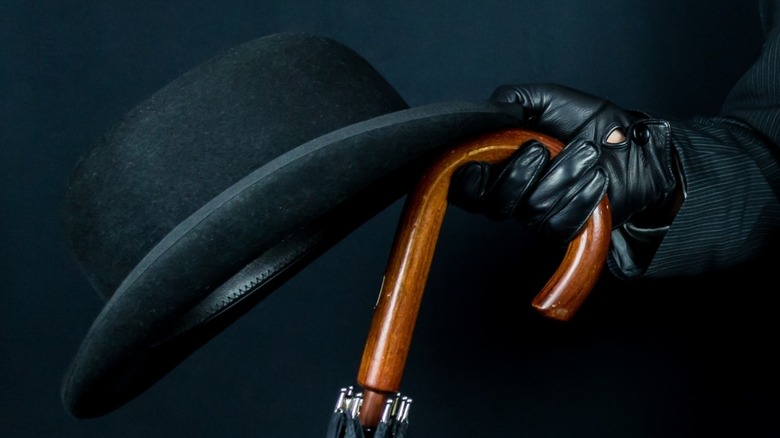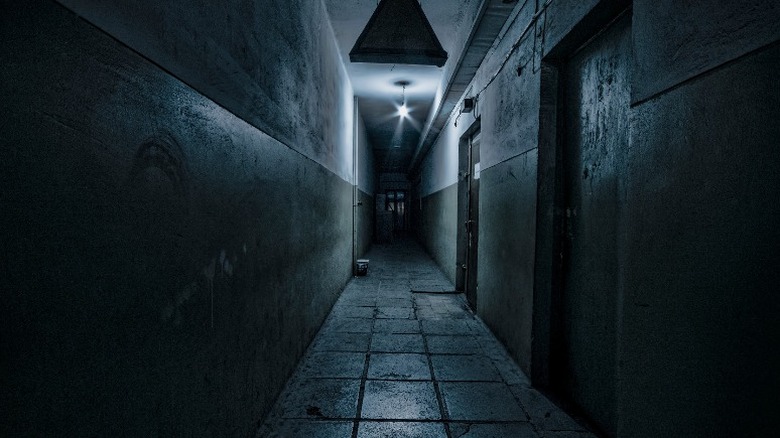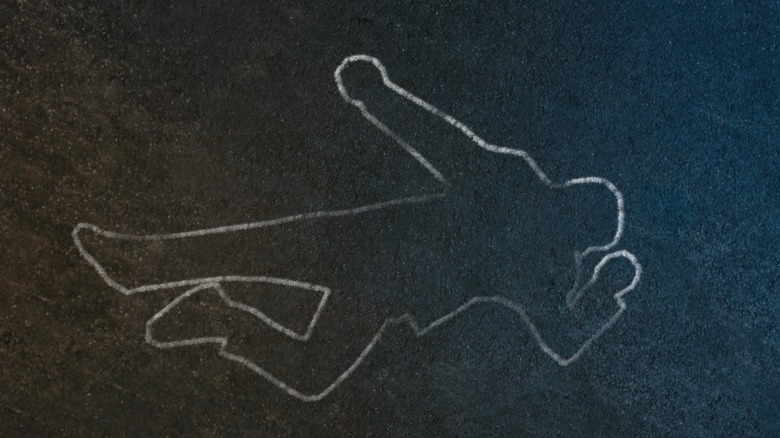These Were H.H. Holmes' Final Words
In the midst of the excitement surrounding the 1893 World's Fair in Chicago, an experienced killer was collecting victims. Before the nearly year-long festivities came to a conclusion, this monster claimed as many as 200 lives, most of whom were tortured and murdered in a death "hotel" that was designed and constructed by the perpetrator. Widely considered the first serial killer in the United States, H. H. Holmes set a chilling standard for what it means to be a violent predator.
Born as Herman Webster Mudgett, Holmes adopted his infamous moniker by stealing it from a pharmacist whom he impersonated (via Biography). Holmes was suspected of killing the man and seizing his practice, although the murder was never proven. But the money from the newly acquired business wasn't enough for Holmes. Always scheming for a way to make a fast buck, Holmes hatched a plan to lure in marks so that he could swindle them. Unfortunately for anyone he aimed to defraud, this plan also included their murder.
The murder castle
A career grifter, Holmes was experienced in insurance fraud. He also preyed upon widows, concocting various ways to scam them out of their money or jewelry. Using money these crimes and from the money his pharmacy was raking in, Holmes constructed an elaborate three-story mansion in the early 1890s. "The Castle," as Holmes referred to it, was built with secret rooms, hidden passageways, and trap doors. There were also chutes in multiple locations, leading to a basement room with an incinerator (via History).
As the Columbian Exposition opened for the World's Fair in 1893, Holmes began to market his new building as a hotel for visitors. In the course of just several months, Holmes was able to attract a good number of guests, as well as local women that were promised employment. Unbeknownst to those who were attending the Expo, many of the guests were disappearing without a trace.
Because many of those Holmes attracted were tourists, their disappearances weren't immediately known or reported. However, concerned relatives of several of the women that Holmes had hired began to arouse some suspicion with local law enforcement. Further frustrating Holmes' efforts were the pressures that insurances companies were putting on local prosecutors, who began building legal cases against him for arson and financial fraud (via Historical Crime Detective).
More fraud and murder
Holmes fled Chicago to avoid an arrest — but old habits die hard. Holmes soon convinced a long-time partner in previous financial frauds, Benjamin Pitzel, into faking his own death for the insurance money. The $10,000 payout was supposed to be split between Holmes and Pitzel's "widow," with the proof of death relying on a body Holmes was supposed to secure from a morgue. Rather than be bothered with extra work, Holmes knocked Pitzel out with chloroform, then set his body on fire.
Convinced that he would need to eliminate the entire Pitzel family, Holmes was able to persuade Mrs. Pitzel to allow him to leave with her small children. His ruse was ensuring her that the children would be safer with their father, whom she thought was still alive. Holmes later strangled the children, and buried them in a cellar (via Historical Crime Detective).
After hearing no word from Holmes for weeks, Pitzel's widow alerted authorities. After piecing together information from several police agencies, authorities demanded a search of the "Murder Castle."
Horrors revealed and final words
Detectives didn't find the bodies of the Piltzel children at Holmes' murder house, but they did find the aforementioned secret rooms and passageways. When they stumbled across a hidden basement, they also found vats of acid, medical devices, and an incinerator. They surmised that Holmes would shove his victim's bodies into the chutes, where they were then either dissolved in acid or burned.
Over time, it was confirmed that Holmes murdered 27 victims. It's speculated that his actual body count was much higher, with some estimates putting it as high as 200. But the entire truth will probably never be known, as Holmes' account of his nefarious crimes was often inconsistent.
Arrested and tried for the murder of Benjamin Piltzel, Holmes was sentenced to death by hanging. When being walked to the gallows, Holmes remained calm and quiet. His last words were to the man attempting to secure the noose around his neck, to which he uttered (via Business Insider), "Take your time, old man. Don't bungle it."



